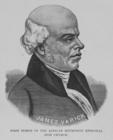
James Varick John Street Church
James Varick, member of John Street Church in New York City since its inception in the year 1765, was a young man who like Peter Williams Sexton of John Street Church, experienced the inspired preaching of Philip Embury and Captain Thomas Webb. Varick was converted when very young. He was a boy about sixteen years of age when Embury and Webb began their preaching in and around New York City in 1766, specifically at the sail rigging loft. A distinguished and well-spoken young man, James eventually was asked to lead class meetings at John Street. James would be a leader among the faithful at John Street until his departure, along with many of John Street’s black members in the year 1795. This departure would start the African version of Methodism in the city of New York. This effort known as the African Methodist Episcopal Zion Church would become the center of black Christianity in New York, still in existence today. But more of that in another posting.
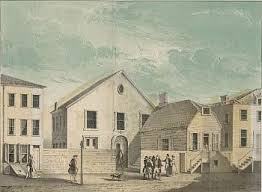
James Varick Early Years
James’ lineage is one of interest. He was born in the year 1750, in the town of Newburg, upstate along the Hudson River. This on account that his mother who was from New York City, was on a trip to Newburg. James’ father was white, a Dutchman and a shoemaker in the growing Dutch city. Young James would be apprenticed by his father as a cobbler. James’ mother was of African heritage, very light skinned and with a trace of Native American in her blood. James too exhibited a lighter complexion, close to a Native American. This trait would be passed down to many in his lineage. The ethnicities of James’ mother and father would make James a recipient of the three main peoples’ groups which made up the virgin forest called America, the European, the African, and the Aborigine.
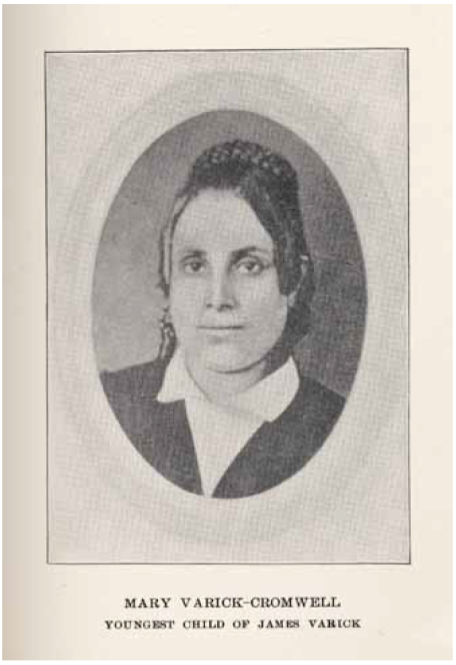
James Varick and Distinguished Varick Family
The Dutch Varick family was one of many accomplishments. The Varick Bank which was in existence for 103 years was named for this family. James’ cousin, Richard Varick would eventually become a Revolutionary War hero and the first mayor of New York City in 1789. Richard would go on to establish the American Bible Society in New York, as well as the New York Sunday School Union. Varick Street in New York City is also named for this distinguished family. James himself starting one of the most successful African Churches in America.
James Varick and 18th Century New York Education
In regards to education, young James grew up in a city which at the time put forth a big effort to educate the younger generation. Interestingly, the schools which young boys and girls of New York City at this time attended were schools run by the local churches. In these schools, both white and black children learned together. According to Mr. S.R. Scroton, the sole black member of the Board of Education of the city of New York in 1905 and a leading expert on the schooling of this period 150 years before 1900, he writes the following:
“So far as any record of the schools of the city of New York, i.e., the boroughs composing the present city, is concerned, we began here with mixed schools one hundred and fifty years and more ago. The first schools were those supported by the several churches, all of them absorbed in schooling the children of their several parishes. They were mixed schools, whites, free blacks and Indians all together. This was true of the old Dutch Reformed Church in Bushwick, of the Dutch Reformed Church in Flatbush, and like churches in their earliest history, followed by the old Sand Street Methodist and by those of other denominations for a very long period. The only schooling had by colored children was obtained in these church mixed schools. The first separate schools for ‘African Children’ hereabouts were attempted by the Quakers, who became what was known as the Mann Mission Society as early as 1794, immediately upon the passage of the forty year act for the gradual emancipation of slaves. These good people had been largely instrumental in freeing the ‘African slaves’ hereabouts, and they at once set about opening schools to be especially devoted to these newly free children. They imported an Englishman named Piesson to teach the first school at a salary of three hundred dollars per annum; but since the colored people avoided this separate school and stuck to the church parish schools, he was able to report an average attendance the first year of only twenty-six scholars, and the project very nearly came to an end; but by the employment of a colored man teacher, whose name occurs first on the roll of the African Relief Society, they succeeded in increasing the attendance and a number of Society, which had been established by John Jay, De Witt Clinton and others, there were several of them in a fairly flourishing condition.”
What is interesting that, like the vibrant community of whites and blacks at John Street Church, Mr. Scroton ends with this final interesting comment on the schooling of children in New York during James’ years of learning: “Nevertheless there was ever complaint of the difficulty of keeping the seats filled, because so many colored children who were in the outlying districts were admitted to white schools…”
James Varick Young Adult
As James grew into young adulthood, he would exemplify the characteristics of a great leader. He is described by Bishop Moore in his History of the A. M. E. Zion Church as: “a man of firmness, patience, perseverance, forethought, caution and uprightness.” This undoubtedly from the firm foundation of a great education influenced by the Christian Church.
James would spend the majority of his life living on Orange Street, now called Baxter Street, running from Walker to Leonard Street. In light of the fact that he lived there until his death at 72 years of age, it is more than likely he owned the house, it is documented that many people of African descent owned their property in New York at that time. According to Reverend B.F. Wheeler and his excellent work, The Varick Family, “He (James) was a man of purest morals and he placed a high premium upon the bond of sacred wedlock.” But this eventual marriage to a most perfect help mate would wait until he was 48 years old. In the year, 1798, James married Aurelia Jones. She of a brighter complexion than he, “as the color of his children and grandchildren shows.” (Wheeler).
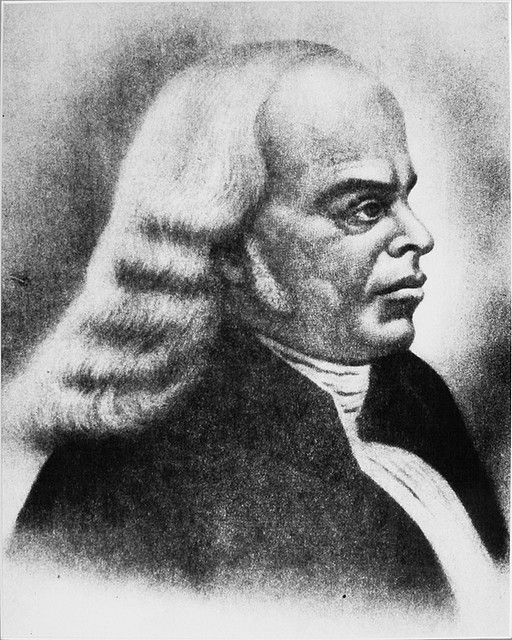
James Varick and Youngest Daughter Emeline
Returning to the distinguished Varick family’s heritage we consider one of James and Aurelia’s children. They had four children. From Wheeler’s book:
“The third child of James and Aurelia was Emeline. Her father gave her the best school advantages possible for her to obtain at that time in New York. She married, after growing to be a young woman, John Basteen. She seems to have been very fortunate in her marriage, for John Basteen proved to be a very worthy husband. He was a native of Haiti and lived to an extreme old age, and died in New York in 1885, at the age of seventy-nine. Both John Basteen and his wife, Emeline, were prominent characters in New York society during their long lives. His wife, Emeline, was a public spirited woman, and seems to have inherited a great deal of her distinguished father’s spirit for making the world better. She was directress of the board of the Colored Orphan Asylum, and an active member of St. Phillip’s Protestant Episcopal Church, New York City. In all these movements of charity and reform, she was associated with Mrs. Charles Reason, Miss Fannie Tompkins, Miss Eliza D. Richards, and others. These intelligent and influential ladies, in addition to their work of charity and reform among people of New York, often held fairs and in other ways raised money to aid the colored soldiers during the civil war. Mrs. Basteen, like her husband, lived to a ripe age to prosecute her benevolent work of helping others.”
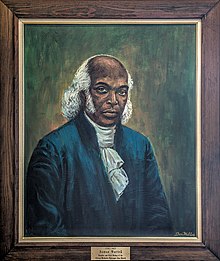
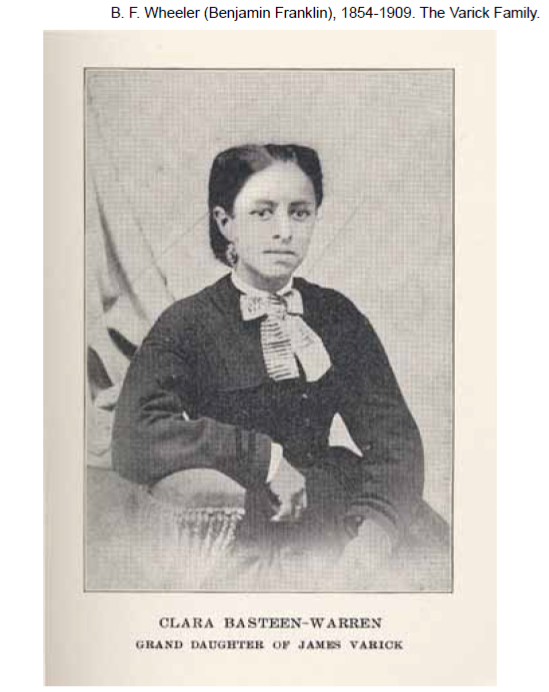
James Varick and his AME Zion Church
Returning to the subject of James Varick and many of John Street Church’s members of African descent leaving and forming their own church, there seem to be several paths of thought on this departure.
According to B.F. Wheeler, he pens the following:
“In 1797, there was a great increase in colored members of John Street Methodist Episcopal Church, and it is not improbable that Varick, who was still on good terms with that church might have had something to do with this great ingathering of colored people in the church, and this might have led to his being licensed to preach, so that he might assist in caring for them.”
Reverend Wheeler admits that this is “mere conjecture,” on account that not much exists in regards to the whys of the departure other than a growing sentiment against the African members. This evidenced by several unchristian acts by the European members against the African members. These efforts obviously declining the once vibrant community of thirty years to the point of separation.
But what stands out is the comment that “there was a great increase in colored members of John Street Methodist Episcopal Church…” Was this a growing trend as it became clear that, as imperfect as the carrying out of the mandates of the Declaration of Independence penned twenty years before may have been, promising signs were beginning to show up allowing for those trapped in slavery a chance to thrive in the north?
Take for example the case of a future Bishop of the church James Varick started, The AME Zion Church. This individual escaped slavery in Craven County, North Carolina, arriving in New York City in the year 1798. What is also known about this individual, a young man twenty-one years of age is that five years before his escape, at the age of 16, he embraced Christianity. Did his conversion experience help him to hear of the burgeoning church for Africans in New York City? Or was it earlier that he heard about a vibrant young African who preaches in a large church made up of both Europeans and Africans? One doesn’t know for sure, but this individual eventually winds up as the assistant to James Varick at Zion Church. This young man eventually becomes the Bishop to follow Bishop Varick upon Varicks’ death. This young man was the future, Bishop Christopher Rush.
Bishop Hood in his, One Hundred Years of the African Methodist Episcopal Zion Church, takes another path, boldly proclaiming an “increase in Negro haters.” Who were these “Negro haters” and what was their purpose? Clearly, they were set on destroying a beautiful community. But why? This is the question at hand. One I suspect a discernable answer will greatly bless contemporary American Christianity. Eventually, Bishop Hood brilliantly surmises that this creation of a black church throughout the Northeast did eventually prove beneficial 70 years later, ministering to the newly freed African Christians who survived slavery in the south- having a ready team of black preachers to move south once emancipation and the civil war were completed.
Consider the words of Bishop Christopher Rush mentioned above: “In the year 1796, when the colored members of the Methodist Episcopal Church in the City of New York became increased, and feeling a desire for the privilege of holding meetings of their own, where they might have an opportunity to exercise their spiritual gifts among themselves, and thereby the more useful one to the other, a few of the most intelligent obtained permission from Bishop Francis Ashbury to hold meetings by themselves, in the intervals of the regular preaching hours of our white brethren, in the best manner they could.”
As you can see just from the three individuals above, the subject is a challenging one. More scholarship is needed.
James Varick and John Wesley
Interesting is the fact that James Varick deeply respected that which he came from. His love and respect for the church which brought him to a Christian conversion experience were clearly evident. Like John Wesley who sought to honor the English Anglican Church, instructing his preachers not to administer the ordinances of baptism and communion but to seek out the local Anglican Church for these, James sought to honor the Methodist Church structure. He clearly set up AME Zion with the same governing structure. He also allowed Zion Church to fall under the jurisdiction of the American Methodist Episcopal Church. But his respect for the mother church goes deeper. Interestingly, he refused Elder’s orders or ordination until the year 1820. This would remove the governing management of the mother Methodist Church and give full weight to the Zion Church. Twenty-five years after his departure from John Street Church, James Varick finally gave in and accepted the distinguished honor for his church and for himself. According to Wheeler:
“There were those who criticized Varick for keeping in such close touch with the Methodist Episcopal Church. They wanted him to have an open rupture with that church. But Varick had too much good sense for that, for all that he was he owed to the Methodist Episcopal Church.”
James Varick, truly a Godly man who God used greatly.

